How to get an upgrade on a flight (when you can’t ask the CEO directly)
By Michael Gebicki
Remember that quote from Jesus, about how it's easier for a camel to pass through the eye of a needle than for a rich man to enter heaven? It's almost that tough to score an airline upgrade.
Revelations this week around Prime Minister Anthony Albanese receiving Qantas upgrades for travel through direct requests to the then-chief executive Alan Joyce have offered a glimpse into the hidden inner workings of airline member benefit schemes.
The claims, featured in the newly launched book, The Chairman’s Lounge, by journalist Joe Aston, dive into the airline perks enjoyed by politicians – among them, free money-can’t-buy membership to Qantas Chairman’s Lounge, described by Joyce as “probably the most exclusive club in the country”.
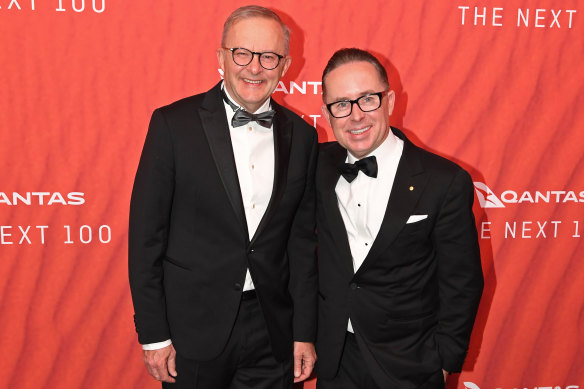
Anthony Albanese with then-Qantas CEO Alan Joyce at a 2023 gala celebrating the airline’s 100 years of operation.Credit: Getty Images
As Albanese’s personal relationship with the former Qantas head continues to face scrutiny, the question of how Qantas hands out upgrades has come to the fore.
Is it a game of climbing the status ladder? Do you just need to dress nicely at check-in? And how much power do airline executives and staff really wield to upgrade? According to the book, while the airline’s executives can approve “space available” upgrades for flights if there are seats available after check-in has closed, Joyce was the only senior staff member with the authority to guarantee upgrades.
The reality is the majority of Qantas’ 15 million loyalty members don’t have a direct line with the chief executive – but we all want to maximise our chances of sitting at the pointy end. So, what’s the best way to do that?
Before considering some strategies that might or might not work, it’s useful to know how airlines think about who deserves the champagne treatment. Although airlines might play on different fields, the rules of the game are about the same.
Airlines won’t upgrade just because there are unsold seats in the class above the one you’re sitting in. In the past, maybe, but freebies like that just don’t happen these days. If airlines offered upgrades that some passengers could count on, what would be the point of charging a premium price for nobs’ class?
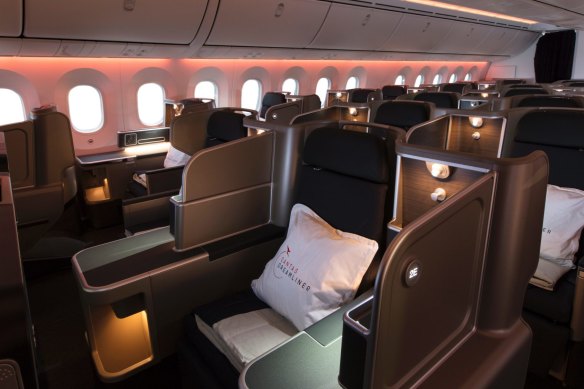
Looking to upgrade? Ask how much it could cost when you check in.
In order for a passenger to get an upgrade, either the push factor or the pull factor has to be in play. The push factor happens when a particular class on a flight is overbooked and the class above has empty seats. The airline will then decide to offer op-ups – operational upgrades in airline parlance – to a favoured few.
Loyalty gets a big tick. Airlines smile upon those who choose to fly with them regularly, and flyers with a bundle of loyalty points and status credits are front of the queue if the airline is handing out upgrades.
Next in line are passengers travelling on full flexi-fares rather than discounted tickets, and that’s about it. From these categories, airlines have more than enough candidates to take care of any overbooking situation.
The pull is all about those strategies a passenger can employ to get themselves into the world of soft linen napery and lie-flat seating.
Since your points balance is crucial, it pays to fly with the same airline or just a couple of airlines within the same alliance as far as practical. It might also be worthwhile signing up for an airline-affiliated credit card, which might come with 50,000 or even a Godzilla-like 100,000 points, but beware the annual fees and minimum spend. Become a diligent reader of Point Hacks.
Platinum membership is the holy grail of frequent flyers looking to derive maximum benefit from their airline points.
In addition to all the perks that accrue to the status tier immediately below – priority check-in, extra baggage allowance, lounge access – most airlines reward their top-level flyers with more bonus points every time they fly and priority access to award seats and upgrades.
What does Qantas platinum status actually get you?
Platinum One: This tier of flyer and their family members on the same booking have preferential access to classic reward seats. They also get double points on eligible flights aboard Qantas, Jetstar and American Airlines, the highest priority for upgrades, a service hotline and complimentary Platinum membership for a family member or friend. That’s on top of the benefits that apply to Platinum members, one level below Platinum One.
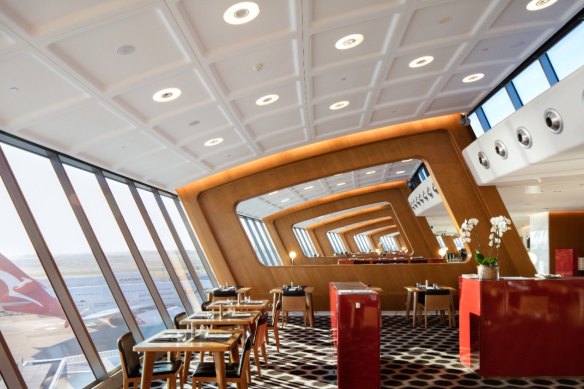
Platinum and Platinum One members can access Qantas’ International First Lounge.
Platinum flyers who earn 500 status credits receive a Qantas loyalty bonus, either 8000 Qantas points or 50 status credits. Members who earn 2400 status credits in one membership year get a 50,000 Qantas points boost or complimentary Gold membership for a family member or friend. Requests for international classic upgrade reward seats are prioritised, and extra legroom seating if it’s available on selected Qantas-operated international flights.
At the airport, Platinum members receive priority check-in and boarding, fast-track security clearance, priority baggage handling and extra baggage allowance. On a stopover, when the connecting flight is aboard Qantas, Jetstar, Emirates, China Eastern or a Oneworld member airline, Platinum flyers can use the business lounge, no matter which class they’re flying.
Qantas Gold flyers get quite a few of the perks that apply to Platinum members, such as easier access to upgrades, lounge access, expedited airport processing and priority phone service. For many Platinum One flyers, the main benefits are the double points, the bonus status credits and preferential access to classic reward seats.
Membership requirement: 3600 status credits earned within one membership year, at least 2700 of which must be acquired on flights with a Qantas flight number.
Chairman’s Lounge: Frequent flyer site Points Hacks’ Daniel Sciberras pointed out that while many politicians are Chairman’s Lounge members, this is not directly a tier in itself. It sits alongside the tiers, but Platinum membership (one tier below Platinum One) is complimentary with a Chairman’s Lounge membership.
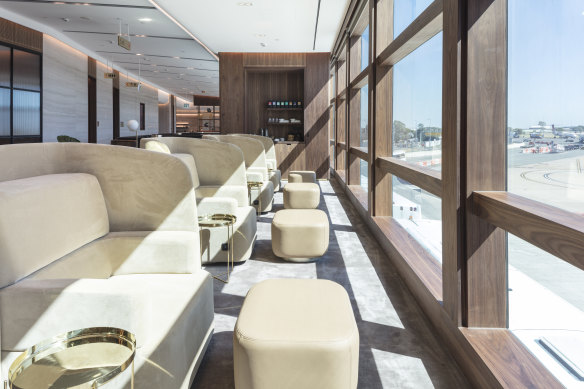
A window into Australia’s “most exclusive club”: Qantas’ Brisbane Chairman’s Lounge.
Since you get complimentary Platinum membership with a Chairman’s Lounge membership, technically you can only be a Platinum or a Platinum One member (the top of the pyramid).
“Chairman’s Lounge members frequently do get complimentary upgrades where operational requirements and seat availability allow. However, these are generally offered on the day of departure (or very close) and not well beforehand, and do not require a call to any Qantas staff or management,” said Sciberras.
“Back in the day, Chairman’s Lounge membership could influence an upgrade, and if there were no business or premium economy seats available, it could be at the discretion of Qantas to bump him to first.”
Membership requirement: Membership is strictly invitation-only, at Qantas’ discretion. While it’s common knowledge politicians have enjoyed this exclusive benefit, the airline has always remained tight-lipped about its criteria and guest list.
Beyond status, what other factors affect my upgrade prospects?
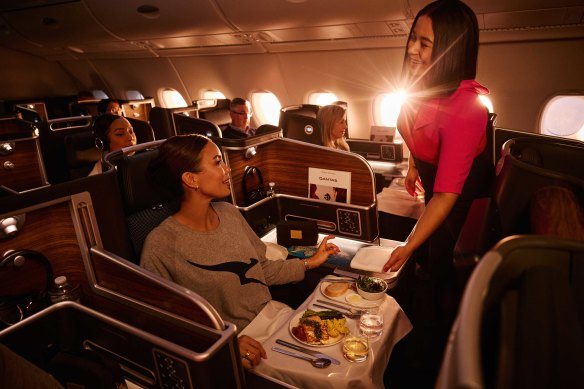
When you have multiple high-status guests and only one premium seat, many factors determine the successful member.
If two members were Platinum One and there was only one seat, other factors would come into play, said Scibberas.
“Things like the fare class purchased, i.e. Flexible versus Red Saver, for example, previous spend by the passenger, when the ticket was purchased and other undisclosed factors.”
Each Qantas passenger has a “value score”, and the elements mentioned feed into that. “The value score will determine the two Platinum One, one business class seat conundrum.”
Five more flight upgrade tips
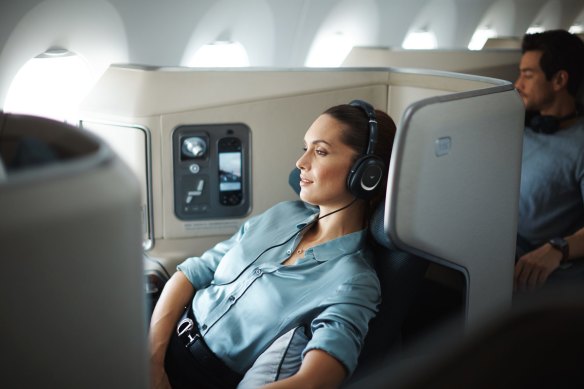
There are more ways to upgrade than simply building status credits.
Check the Plusgrade website: If you’re OK to switch carriers, and you’re happy to bid – albeit at a reduced price – for a seat in the premium cabins, Plusgrade gives you a hotline to the relevant seat auction sites of leading airlines, including Cathay Pacific, Emirates, Singapore Airlines, Qantas and Etihad, which all put unsold premium seats up for bids. You need a confirmed booking in the class below the one you’re bidding for, and you’ll get a notification a few days pre-flight if you’re in the sweet zone. Prices and qualifications vary from one airline to another and route to route, but these airlines are ready to bargain. See plusgrade.com
Fly with an airline that sells Optiontown upgrades: Optiontown sells unsold premium seats aboard a small number of international carriers, including Air India, AirAsia X and Vietnam Airlines, at a big discount. You might have to wait until the check-in desk to find out whether you’re in. If not, you’ll get a full refund. Optiontown is more likely to deliver if you’re travelling alone. If you’re travelling as a couple or a family, book each flyer as a separate entity. If the upgrade comes through for some but not all, you can duke it out at the check-in desk. See optiontown.com
Ask how much an upgrade is going to cost when you check in: It might be a major burn, but maybe not. Once while standing at the Singapore Airlines check-in, the chap next to me asks for an upgrade, economy to business on the Sydney-Singapore sector. “That’ll be $2000,” says the manager behind the service desk. His face turns a shade of white that approximates his linen shirt. “But I paid just $1000 last time for an upgrade,” he says. Manager consults screen. “No, that was because you paid for a premium economy seat on that flight, so the upgrade was less.” See? They know everything; might as well sprinkle your bulldust on the sea. On the other hand, I once got an upgrade with Thai Airways, Bangkok to Sydney, for $800. Almost what the return airfare cost me, but I was unwell and would not have been a happy camper in economy. Some flyers have reported upgrades on Emirates on long-haul sectors costing as little as $US200 ($300).
Fly with a budget airline that has a premium cabin: Those who fly with a budget airline are looking to fly at the lowest possible cost, which is a no-brainer since the comfort/service/satisfaction levels are all close to zero. Some of those budget carriers offer a premium cabin but only rarely is it filled with full-fare paying passengers. These airlines are not interested in protecting their reputation for premium service – they don’t have one – they’re only interested in revenue, and that means any marginal income they can pocket is a win. Thus, a small cost might get you a much better seat. It’s not going to be fantastic. You’re not getting Emirates business class, but it’s better. Approach the airline’s premium counter at the check-in desk with your let’s-make-a-deal face and smile like a winner.
Buy an upgrade on points: Using your points to buy an upgrade is a roll of the dice, and it excludes you from buying the cheapest airfares. On Qantas, for example, only passengers who purchase economy “Flex” and “Saver” tickets are eligible for points-based upgrades, not those with the cheapest “Sale” branded fares. If you pay more for your ticket but don’t get the upgrade, you’ll probably be sitting next to someone who paid about a third to a half less than you, and that’s a nasty thought. If you think you’ve got a shot at an upgrade, avoid flights with lots of business travellers. Chances are their premium cabins will be full, or else your fellow travellers will have the kind of loyalty points balance that puts them way ahead of you in the upgrade queue. Avoid flights that depart early or late in the day and go for midday, midweek and Saturdays. Contrary to popular myth, dressing like George Clooney – or Amal – won’t get you an upgrade. But if the cabin you’re booked in happens to be oversold and the airline is looking to upgrade, look like you belong, and you just might qualify. Wear cargo shorts, thongs or a singlet, and your chances are zip, even with a Kanchenjunga of loyalty points.
What won’t get you an upgrade? “Because today is my birthday”, “Because didn’t you see me on MasterChef?” “Because here’s a box of macarons my mother just made for you”, “Because my dog died, and I’m really feeling it”. The staff at the check-in desk have heard it and then some, and it never works.
with Katherine Scott
Sign up for the Traveller newsletter
The latest travel news, tips and inspiration delivered to your inbox. Sign up now.